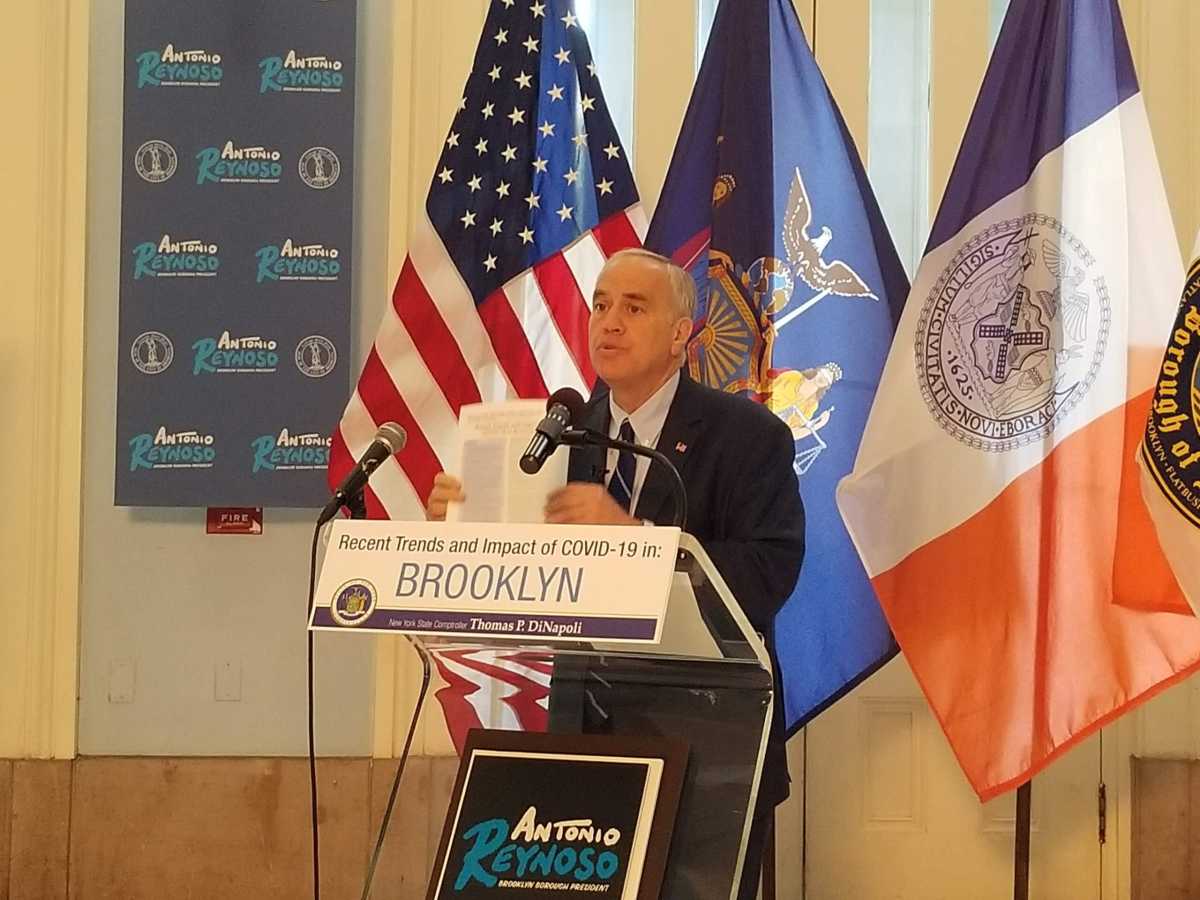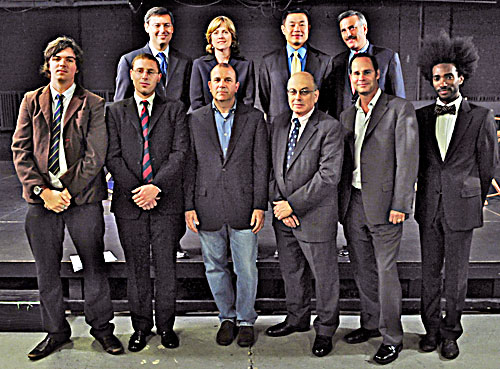Brooklyn’s economic recovery has outpaced that of the rest of the city, with the best borough having added more than 100,000 new jobs since the apex of the pandemic in April 2020. But Brooklyn still has a ways to go to fully recover economically from the devastation wrought by COVID-19.
The findings came in a new “snapshot” report on the borough’s economy released May 23 by State Comptroller Tom DiNapoli. The borough lost 145,000 jobs between the first and second quarters of 2020, as the coronavirus began its rampage on the Big Apple and forced non-essential workers to stay home. As of November 2021, it had regained 103,000 jobs, still 6% below pre-pandemic employment, but better than the 10% gap in pre- and post-pandemic employment for the city at large.
“No one should bet against Brooklyn, under any circumstances,” DiNapoli said at the report’s unveiling at Borough Hall on Monday. “And I think this report shows that already, while we’re really in the first phase of the recovery post-pandemic, Brooklyn already is leading the way in so many ways.”
The borough’s job recovery was led by gains in the leisure and hospitality industry, which added back 26,000 jobs, though jobs in that sector are still 8% below the first quarter of 2020. Other high-growth sectors include retail and health care, both of which rebounded by about 16,000 jobs. The only sector studied by the Comptroller to actually grow since pre-pandemic was social assistance, where there are now 5.4% more jobs in Brooklyn than there were in the Before Times.
While employment at mid-size and large employers suffered substantially, the number of “micro-businesses” — those with fewer than 10 employees — actually increased as the pandemic took hold in New York. The number of micro-businesses in Brooklyn is still 1.6% above pre-pandemic levels, foretelling optimistic headwinds for Kings County commerce.
A lot has happened since the state’s chief fiscal officer last issued an economic snapshot for Brooklyn in 2018, when the borough’s economy was booming with no end in sight, and only those in lab coats had ever heard of a coronavirus.
In the decade before COVID, also known as the 2010s, Brooklyn saw significant economic growth, adding some 216,000 private-sector jobs between 2010 and 2019, a 47.5% upswing that significantly outpaced growth in any other borough or citywide. Median household income grew by 58.8%, from $42,150 to $66,900, more than any other borough.
Bedford-Stuyvesant saw a greater proportional increase in jobs than any other neighborhood, more than doubling its employment levels, while Borough Park, Kensington, and the Ocean Parkway corridor saw the largest number of new jobs, with just under 39,000 new positions, twice what those areas recorded in 2010.
DiNapoli said that the report is intended to facilitate data-driven decision-making by policymakers. Borough President Antonio Reynoso, who joined the Comptroller Monday at the People’s House, said that the snapshot is invaluable in devising a “comprehensive plan” for community development in the borough, which he has called one of his top priorities early in his beepage.
“People want to chase where the political capital is, where the voters are, versus where the need is. And what snapshots like this do is they allow for elected officials and folks who really want to affect meaningful change, it’s a guiding document,” Reynoso said at Borough Hall. “What we’re going to do now is we’re going to be working alongside the Comptroller’s office, with this information that we have in the snapshot, to help center, foundationally, the work that we’ll be doing for this comprehensive planning. The plan will be based on data and information.”
Brooklyn District Attorney Eric Gonzalez also said that his office will be using the snapshot to inform crime-fighting strategies, especially in terms of how to best allocate and distribute the resources that he says are key in keeping crime low.
Despite strong growth over the past decade, and a better-than-average pandemic recovery, Brooklyn still has major headwinds to contend with. Nearly one in five Brooklyn households are below the poverty line. Median rent grew by 37.5% between 2010 and 2019, more than the city or any other borough.
Not every neighborhood saw growth in the boom times: East Flatbush actually shed nearly 2% of its jobs in the previous decade. The borough still suffers from stark inequality, with its richest area — Park Slope, Carroll Gardens, and Red Hook — having a median household income five times that of the poorest, Brownsville and Ocean Hill, just a few subway stops away.
And the borough and city still have work to do to recover economically from the pandemic, but DiNapoli said he believes that losses will eventually be recouped.
“It is gonna take time, and you’ve got some real headwinds there with inflation, some of those big economic trends that are a little troubling right now,” DiNapoli told Brooklyn Paper. “But, particularly for Brooklyn, there’s no reason not to think it’s on an upswing. We just need to keep that upswing going.”























